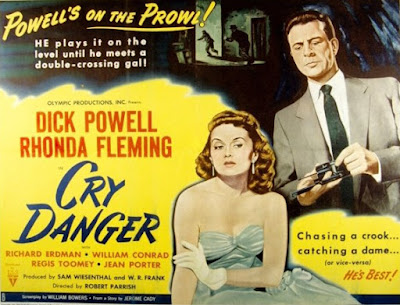The first thing to notice about this film is the seemingly stock music opening with a prominent xylophone. Perhaps the blame falls on the film's composer, Richard LaSalle. It may remind you of a Hanna-Barbera cartoon. This sounds to be the exact music used in many comedic parody skits concerning a nostalgic lifestyle. The meager production budget is not terribly apparent but it is an old premise of good and evil twins, played by Marcia Henderson. I was a little uncertain if the twins represented the movie's title. One twin is a well-behaved widow raising her young son. Not deadly. The blonde, conniving evil twin is married to Robert Lowry, the perennial bad guy who, in this film, looks particularly sleazy in a black blazer, an open-collar shirt with a white ascot. Drink in hand. Got it. This is the duo.
Good twin’s husband was killed in a racing accident. He was to be the heir to a mega industry’s throne. His mother, Irene Tedrow, is the CEO. She wants good twin’s little boy to be the future heir and feels he should be tailored in the States, by her side, and not in Acapulco. She and her attorney want struggling Los Angeles attorney, handsome Craig Hill, to bring him back. Close your eyes and Hill's voice may conjure up actor Bob Cummings. He is repulsed by the idea of buying her a grandson and refuses. We next see him checking in at a hotel. The 50k he will be paid reminded him of how lovely Acapulco can be.
Naturally, good-twin rejects the absurd idea, and Hill is shown the door. But he and the good twin hit it off on their second meeting. Hill has a natural rapport with her son. After getting off to a rocky start, they like each other. Henderson is believable as the good twin but her clichéd acting and blonde wig as the bad twin does not come off as well.
Lowry double-crosses good-twin. Did not see that coming. He convinces her to take a restful day to herself so he can tamper with her car and lie to Hill that good-twin has changed her mind and is willing to sign the papers to send her son back to Tedrow. A confused Hill blasts away to the house in his cool 1961 Thunderbird rental car. A scene that is repeated about four times in the film. The bad twin awaits in good-twin's brunette wig and signs the papers. Hill does not question her sudden change of heart but is visibly angry at her.
Head-strong Tedrow, with her attorney in tow, flies to Mexico after the attorney’s phone conversation with Hill suggests there is a problem with accepting her offer. Upon arrival at the airport, they see Lowry tampering with good-twin's car. How this is possible I do not know, but it is incredible timing on their part. I am surprised they even recognize him. Once an "accident" is arranged for good-twin, Lowry and bad-twin are confident they will inherit 500k from her sister’s will. With all legal parties present, good-twin walks into the room. Bad-twin is stunned. Lowry a tad queasy.
The ending is a contrived happy one as everyone is now pleased with each other. The boy can stay with mom and Hill loses 50k faster than a Bernie Madoff investor. His trustworthy handling of the affair, however, endears him to the attorney as a future partner.
Note: This seventy-minute film was released in early 1962 by United Artists, produced by Robert E. Kent and presented by the Harvard Film Corp. It is written by Orville H. Hampton (aka Owen Harris) from a novel by Richard Jessup. The music is by Richard LaSalle. Most of whom can explain this forgotten film.



































